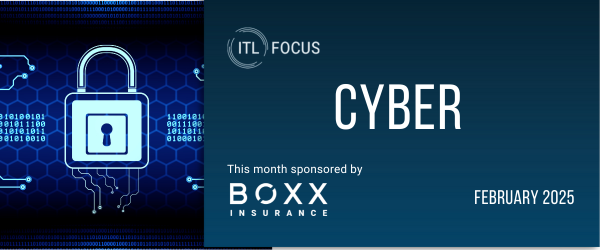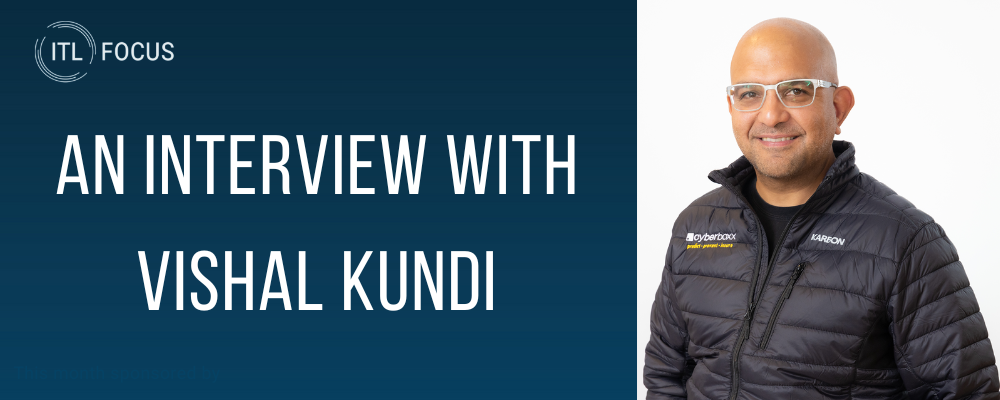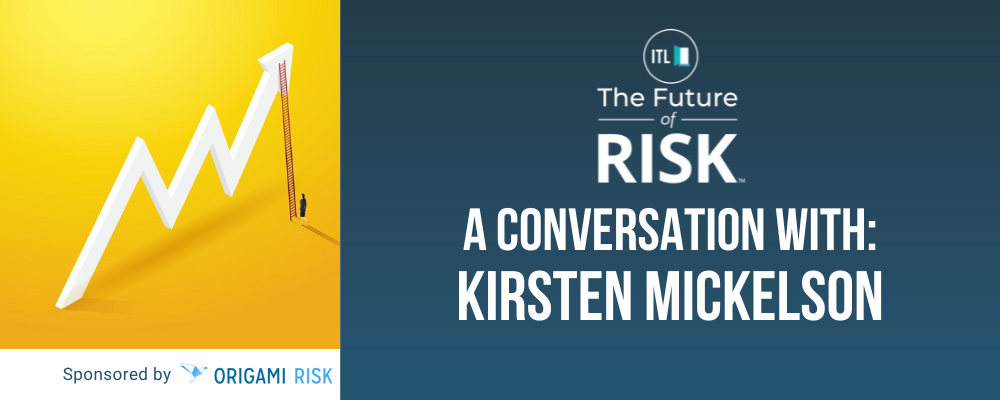Out Front Ideas with Kimberly and Mark kicks off yearly with our popular 20 Issues to Watch webinar. While there are certainly more than 20 issues to discuss, we focused on the high-impact matters relating to risk management and employee benefits that need more attention. These are essential issues for every risk manager, HR manager, and insurance professional to monitor in 2025.
- Climate Change
For risk managers and insurance carriers, climate change is not a political discussion. Weather risks are intensifying and becoming increasingly unpredictable. Hurricane Helene destroyed major interstates in western North Carolina and eastern Tennessee, where flood damage was unexpected. The Los Angeles wildfires have devastated the second-largest metropolitan area in the U.S., forcing over 200,000 people to evacuate. Additionally, California regulations have restricted carriers from using catastrophe modeling instead of historical losses to appropriately adjust premiums, creating an unsustainable business model. Over the last two years, this has resulted in cancellations or non-renewals in wildfire-prone areas.
- Mental Health and Well-Being
Expanded mental healthcare facilities, digital health solutions, and practitioners offering online services are opening access for more patients. Interventional psychiatry is also using advanced treatments, like brain stimulation, new medications, and enhanced psychotherapy, to manage difficult-to-treat mental health conditions. From an employer perspective, leaders must be upskilled to understand the impact of disabilities and neurodiversity on their employees. Understanding how these differences affect their performance and interactions can lead to better opportunities for retaining great employees.
- Aging Infrastructure
According to the American Road & Transportation Builders Association, around 36% of U.S. bridges need repair or replacement. Many water systems are also aging, with some areas, like Jackson, Mississippi, experiencing water crises that leave their residents without safe drinking water for weeks. The U.S. electrical grid, built in the 1960s and '70s, has 70% of its transmission lines that are over 25 years old. Many of these have led to wildfires, which could worsen over time.
- Employee Benefit Landscape
According to Deloitte, employer-sponsored health insurance plans cover roughly 154 million people in the U.S., and costs have escalated for the third year in a row. Employers continue to seek affordable plans to encourage well-care and prevention. Additional benefits like accident and injury coverage, pet insurance, paid leave, reproductive health, and more continue to be popular offerings that are important to the workforce. Unsurprisingly, GLP-1 drug coverage is now being offered by one in three employers. The highly effective weight loss drug could become more widely available, with the potential to increase health equity.
- Election Impact
Government regulations could be upended, as the Trump administration has promised to reduce their impact. Last year’s overturned Chevron deference ruling could potentially affect the Medicare set-aside (MSA) industry, with its compliance rules based on a limited section of statutory language. Additionally, risk managers should continue to closely monitor domestic risks, such as the most recent terrorist attack, on Jan. 1, as well as rising geopolitical risks that could affect war risk exclusions.
- European Union (EU) Regulations Affecting U.S. Companies
The EU’s Corporate Sustainability Reporting Directive (CSRD) aims to standardize sustainability information so companies can create comparable and reliable details for stakeholders. This environmental, social, and governance (ESG) regulation applies to EU and non-EU companies, including public and private organizations. Implementation is staggered through 2029, with the first report submissions due in 2025. There are 3,000 U.S. companies either exporting or doing business in the EU that must report, which is expected to grow to 10,000 U.S. companies at full implementation and include 50,000 companies globally. Additionally, U.S. companies need to understand compliance with the AI Act, which uses a risk-based assessment to create more ethical AI, and the General Data Protection Regulation (GDPR), which defines personal data usage.
- Insurance Marketplace
Brokers and risk managers may be experiencing rate fatigue, but insurance carriers face increased jury awards, property losses, and vehicle and property repairs. Until combined ratios return to profitable levels, rates will likely continue increasing. Parametric insurance, which insures a policyholder against a specific event by paying a set amount if the triggering event occurs, is becoming more popular for harder-to-insure properties. With no appraisals or valuation disputes, they are quick to settle. Finally, per- and polyfluoroalkyl substances (PFAS) claims are set to reach $80 billion in litigation costs, according to The Insurer TV. Reinsurers are beginning to exclude these claims, and these exclusions may eventually reach the primary coverage layer.
See also: Insurance Industry Embraces Tech, Trust in 2025
- Evolving Technology and AI
From improving safety and loss control programs to forecasting financial trends related to accidents and claims development, risk managers are using AI to establish new protocols for their organizations. Their improved ability to understand real-time risks in the business helps operational and executive leaders. Payers are rapidly evolving claims processing, as this tech supports claims teams’ productivity gains, improving operational consistency and quality performance. Other applications include claims triage, medical record and claims summarizations, reserve planning, fraud detection, and even virtual assistance for claims and clinical professionals.
- Cyber
According to LexisNexis Risk Solutions, AI-assisted fraud schemes could cost over $1 trillion in the next year. Increased cyberattacks on U.S. government agencies, private organizations, and infrastructure have led to significant losses, with many calling for a federal government backstop to protect from even larger attacks. With an average global cost of around $4.9 million, cyber incidents remain a focus for risk managers and organizations alike.
- Diversity, Equity, and Inclusion (DEI) Perspectives
With some U.S. companies discontinuing DEI programming, groups should define their position. Inclusivity can be driven without a corporate stance, but employees want to feel respected and valued by their peers and leaders, which requires more transparent dialogue. Active job candidates will still search for DEI initiatives on company sites and social media to understand group policies and know they will be supported.
- Labor Shortage Impact on Claims
Retail, restaurant, hospitality, and construction industries are still struggling to find workers. Employers are also trying to produce the same results with fewer employees, driving fatigue and overexertion among their workforces. Risk managers should monitor accident trends to note any correlation with staffing challenges. Employers should seek solutions for automating tasks, reducing strenuous activities, and monitoring unsafe practices.
- Healthcare Landscape
Regulatory changes under the Trump administration could lead to more oversight of the Food and Drug Administration (FDA), with the Department of Health and Human Services (HHS) focused on vaccine safety, pharmacy benefits managers, and drug approvals. Transformative technology continues to drive patient-centered care with expanded telehealth, virtual health assistants, and advanced care. Lastly, healthcare staffing and burnout are continuing to drive workforce challenges. This year, nursing is expected to reach a 10% to 20% shortage of staffing necessary for direct patient care.
- Exclusive Remedy in Workers’ Compensation
Most states have strict exceptions to workers’ compensation's exclusive remedy, which requires proving gross negligence or intentional acts. However, recent litigation in a couple of states has circumvented these restrictions. In Virginia, lawsuits filed in two workplace shootings alleged the employer was negligent by not taking action to ensure a safe workplace. Last September, the Pennsylvania Supreme Court ruled in Elite Care RX v Premier Comp Solutions, allowing the healthcare providers to file a civil suit for non-payment of bills. Finally, in November, an employee fired for fraud who sued in civil court for defamation was awarded a $34 million judgment.
- Optimizing Your Risk Management Program
Risk managers are deploying in-house data analytics and AI modeling to improve safety and loss control and their understanding associated with enterprise risks. They are working diligently to integrate risk management into strategic decision-making across their organizations and partnering closely with their business partners to enable a risk-aware workforce. Evolving risks may require a nuanced approach to risk assessment and mitigation. In the wake of United Healthcare CEO Brian Thompson’s assassination, organizations are rethinking public display and openness about the location of their executives and employees. Boardrooms across the U.S., for the insurance industry or otherwise, are reflecting on this incident to improve their employee safety.
See also: 2025 Insurance Outlook – 3 Major Trends
- Biometric Privacy Laws
Unauthorized collection or disclosure of biometric information has led to several class action lawsuits, particularly in Illinois, but their statute was amended last year to limit damages on a per-person basis instead of per scan. Still, potential exposures are significant, with biometric privacy laws in Illinois, Texas, Washington, and New York City. Other states and municipalities are also considering similar legislation. Risk managers should monitor this evolving legislation and consult with counsel and other experts to ensure their policies with collections and use of biometric data follow statutes.
- Achieving Operational Excellence
With the culmination of workplace technology advancements, newer workforces, increasing retirements, and outdated workflows and processes, now is the time for organizations to rethink how they drive performance. Identifying cross-functional teams to assess strengths, weaknesses, and actionable improvements in a company’s operations, talent, and customer satisfaction may help drive meaningful changes to reach excellence in 2025.
- Legal System Abuse
In 2023, jury awards over $10 million reached a 15-year high, with 27 cases reaching over $100 million. This trend affects every business and public entity, raising the costs of goods, services, and taxes for every American. Legal system abuse is driven by deceptive attorney advertising, anti-corporate sentiments, and the devaluation of money, but the solutions are systemic. Tort reform on judgment caps could help, but little progress has been made. Additionally, litigation funding needs extensive oversight, particularly as it threatens U.S. national security. Chinese government-backed companies use litigation financing to pursue patent infringement claims against U.S. technology and defense companies, not to prevail in litigation but to access trade secrets through the discovery process.
- Managing Through Mergers, Acquisitions, and Divestitures
HUB International’s Outlook 2025 report noted that 45% of business leaders surveyed report planning or implementing strategic partnerships, 43% are planning or executing mergers and acquisitions (M&A), and 35% are planning international expansion. Risk managers preparing for these events should ensure their teams adequately understand these projects to identify, analyze, and mitigate potential risks. Consider the following items throughout the process: due diligence and deal intricacies, planning and executing integration, enterprise risk assessment, mapping regulatory compliance, broker partner and insurance reviews, understanding new and long-tail claims, and post-event operation models.
- Workers’ Compensation Claims Trends
In the last two years, more states have revised fee schedules to catch up with the increasing costs of providing care, which, coupled with a growing shortage of medical providers, is likely to increase medical inflation. Catastrophic claims, while infrequent, are becoming increasingly expensive, with new medical technology and care, longer life expectancies, and higher rates of accident survivability. Different generations in the workforce are also creating specific challenges. Workers aged 75 and older are the fastest-growing group in the workforce, quadrupling since 1964. When injured, this group experiences more severe injuries and recovers more slowly. However, increasing disability durations in the younger workforce are also trending upward. While unclear, there is speculation that there is a greater valuation on work-life balance, so younger employees do not return until they are fully healed. Lastly, the industry should continue to monitor post-traumatic stress disorder (PTSD) presumption claims. Some states are expanding mental-mental claims to the entire workforce, versus the first responders that initially benefited.
- Navigating Headwinds
Macro factors, whether economic, political, technological, or environmental, always affect businesses. In today’s environment, it is not the cost of goods, competition, or regulation affecting us the most, but rather the convergence of speed, complexity, and noise. Business decisions are expected to be made quickly, issues are more nuanced than ever, and demands are at every corner, with more stakeholders and communication methods. Getting the right answer is more difficult, but identifying and preparing for approaching risks is evolving organizational risk management.
Listen to the archive of our complete Issues to Watch webinar here. Follow Out Front Ideas with Kimberly and Mark on LinkedIn for more information about coming events and webinars.



































